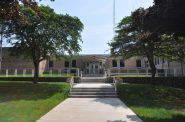What Schools Learned From Virtual Education
Virtual techniques may become permanent part of educational approach for some schools.
“When are we going to get back to normal?”
“Virtual education is not working.”
Parents in tears, often angry, asked these questions of school board members across the state. They described how their children are in despair and have given up on virtual education. Some have been become suicidal.
Janice Mertes has seen the frustration coming from school districts in her role as Wisconsin Department of Public Instruction, Assistant Director of Teaching and Learning. She oversees digital, blended, and virtual education. She believes that next year “most schools understand that they are going to have to have a virtual learning option.”
“The last year really wasn’t a year of online learning; it was a year of emergency remote learning,” says John Jacobs, executive director of the Wisconsin eSchool Network (WEN). The network partners with over 31 districts and schools, and 600 teachers working online with 42,000 students. WEN teachers have had extensive training with well-developed online curriculum. The WEN cites a passing rate of 95% for students taking the courses.
Jacobs says school districts with little experience in online learning had to scramble. “There wasn’t enough time to plan for quality, online learning. Putting a program of online education in two months doesn’t work.”
“[These teachers] were hired to be successful classroom teachers,” says Jacobs. “It is not their fault; it is just the problem they were faced with.”
Yet Mertes was pleasantly surprised at how well teachers around the state were able to handle the change given the lack of preparation.
Few school districts have been as heavily involved in virtual education as the Neenah Joint School District, just outside Appleton.
Matt Anderson is the Director of Instructional Technology in Neenah. He smiles at the progress made by the DPI’s Virtual Learning Time program that was established just a couple of years ago. It was designed to help school districts establish a one-day or two-day virtual education program in case of a snow day or other emergency. Now it seems like ancient history. Just over a year ago, only 65 of the over 400 school districts had Virtual Learning Time plans. Today that number is 266 and rapidly rising.
The Neenah School District established a robust digital program seven years ago. Anderson says it takes several years just to get a quality program running. Neenah was one of the first districts to go online rather than closing on a snow day and was asked to give presentations to other districts on how to go virtual.
Every Neenah student has an electronic device. Teachers can record their lessons so students can watch and re-watch presentations. Assignments are often submitted electronically.
When the pandemic hit, “We were able to say to our staff, you are ready for this,” says Anderson. The learning curve for both teachers and students was not as steep as in other districts. “We were already trained on the stuff when many other districts didn’t even have the stuff.”
“We feel that we will have less learning loss than most districts around us just because we were practiced in this type of instruction… Our teachers are reporting they are getting through all the curriculum for this year.”
But that doesn’t mean Neenah shut its doors and went virtual for the entire year. Its schools tried to be in-person as much as possible. “Virtual education is not right for everybody,” says Anderson. “However, there is a population that it really works for.”
Anderson understands the limitations of virtual education. “There is an emotional toll, no question.” The Neenah emotional coordinator has been busy. But it may be hard to differentiate between issues of virtual education and the trauma of COVID itself.
Having teachers instruct some students in-person and a group at home from a computer link has not worked well in many schools, says Mertes. “We are hearing from districts that they are not going to have teachers teach again in mixed modes.”
Neenah had elementary teachers either teach totally in-person or virtual. More mixed modes were done in the upper grades. But Anderson said that teachers had the right equipment to make sure that students could always hear the teacher, and they could participate in questions and class discussions with speakers connected in the classroom.
Despite its successes, Anderson says, “Some of our teachers are looking forward to going back to 2019. ‘Oh, the year is over. We survived. I can’t wait to get back to normal, get back to the way things were.’ But the way things were will not feel comfortable because things have changed.”
Students must be prepared to live and work in a digital world, how to find information, digest it, share ideas and collaborate. While the virtual classroom may not replace in-person learning, Anderson believes it must be part of contemporary education.
If you think stories like this are important, become a member of Urban Milwaukee and help support real, independent journalism. Plus you get some cool added benefits.
K-12 Education
-
The Unknown MPS Office
 Jun 26th, 2024 by Terry Falk
Jun 26th, 2024 by Terry Falk
-
Who Is Eduardo Galvan?
 Jun 19th, 2024 by Terry Falk
Jun 19th, 2024 by Terry Falk
-
How Will School Board Hire New Superintendent?
 Jun 10th, 2024 by Terry Falk
Jun 10th, 2024 by Terry Falk























Virtual learning, if used wisely, can be a valuable edition to public education. I would bet that some Republican legislator will propose a goofy idea that we could outsource virtual education to teachers in India instead instead of using public school teachers. It is a screwball idea, but unfortunately, some political will propose it, some billionaire will add seed money, and Robin Voss will think its a great innovation.